How to Choose the moving head light manufacturer and supplier in us?
- Introduction: Why choosing the right moving head light manufacturer matters
- Understand your use case and technical needs for moving head light
- Key technical specs to list
- Check certifications and regulatory compliance
- Common and important certifications
- Evaluate LED sources, optics, and mechanical components
- Practical inspection points
- Assess manufacturing capacity, lead times, and MOQ
- What to ask suppliers
- Quality control, testing, and warranty policies
- Red flags and good signs
- OEM/ODM capabilities and customization for moving head light
- Questions for OEM/ODM evaluation
- After-sales support, spare parts, and field service
- Service-level expectations
- Supply chain resilience and materials sourcing
- Price vs. total cost of ownership for moving head light
- Visit the factory or request a third-party audit
- Why LQE is a competitive choice for US buyers
- Comparison table: Criteria to evaluate moving head light manufacturers and suppliers
- Procurement checklist before signing a supplier agreement
- Tips for negotiating price and terms with a moving head light supplier
- Conclusion: Make a decision based on total value and risk mitigation
- FAQ
- References and sources
Introduction: Why choosing the right moving head light manufacturer matters
Moving head light technology drives the visual impact of concerts, theaters, broadcast studios, and venues. Sourcing the right manufacturer and supplier in the US market affects reliability, timeline, total cost, and creative capability. This guide helps venue managers, production buyers, rental houses, and lighting designers select a supplier that meets technical, commercial, and regulatory needs.
Understand your use case and technical needs for moving head light
Every buying decision starts with use-case clarity. Define whether you need moving head light fixtures for touring concerts, fixed installations in theaters or houses of worship, nightclub use, broadcast studios, or rental inventories. Each application prioritizes different specifications — weight and portability for touring, long usable life for installations, silent operation for broadcast, and IP-rated housing for outdoor or dark ride use.
Key technical specs to list
Include required beam angle, lumen output, LED source type, color system (CMY vs RGBW), pan/tilt range and speed, gobo/wheel options, zoom range, and control protocols (DMX512, Art-Net, sACN). These specs translate directly into price and manufacturer capability.
Check certifications and regulatory compliance
Reliability and market access depend on proper certifications. Ensure the moving head light manufacturer provides CE and RoHS for the EU market and UL/ETL or FCC compliance relevant to the US. Compliance also covers electromagnetic compatibility (EMC) and safety standards for luminaires.
Common and important certifications
CE, RoHS, UL/ETL, FCC (where applicable), and IP ratings (IP20, IP65) for environmental protection. Confirm documentation and test reports are available for review.
Evaluate LED sources, optics, and mechanical components
Component quality is the core of moving head light performance. Ask about LED brand (e.g., Cree, Bridgelux, Osram / Lumileds), driver design, lens/optic suppliers, and stepper/servo motor specs for pan/tilt. Higher-quality LEDs and optics give better color consistency, lumen maintenance, and beam quality.
Practical inspection points
Request photometric data (IES files), CRI/TLCI values for color rendering, and L70 or L90 lumen maintenance figures. Confirm lens materials and whether the unit supports precise gobo registration or pixel-mapping (for LED-based moving heads).
Assess manufacturing capacity, lead times, and MOQ
For fast turnarounds or large fleets, production capacity matters. Verify the manufacturer's annual output, typical lead times, and minimum order quantities (MOQ). A supplier that can handle ramp-ups avoids long delays for large events or rollouts.
What to ask suppliers
Ask for average lead time for standard models, production capacity per month/year, and the supplier's policy for rush orders or partial shipments. Confirm warehouse and logistics capabilities for US deliveries.
Quality control, testing, and warranty policies
Robust QC and a clear warranty reduce risk. The manufacturer should perform functional tests (DMX, color calibration, movement accuracy), burn-in cycles, and environmental tests (temperature/humidity, vibration where relevant). A transparent warranty policy with defined RMA procedures is essential for commercial use.
Red flags and good signs
Red flags: vague test procedures, no burn-in data, unclear warranty terms. Good signs: published QC reports, shipment test logs, and direct technical support channels.
OEM/ODM capabilities and customization for moving head light
If you require branded fixtures or custom features (special gobos, unique color presets, custom firmware), confirm the manufacturer's OEM/ODM experience. Many established suppliers offer tailored solutions for rental brands and venue chains.
Questions for OEM/ODM evaluation
Ask about minimum customization order, design lead time, support for private labeling, and firmware/IP ownership terms. Confirm if the manufacturer will help with safety documentation for US market registration.
After-sales support, spare parts, and field service
Moving head light maintenance is ongoing. Reliable spare parts supply (motors, drivers, LED modules, power supplies) shortens downtime. Check if the supplier offers field technicians or certified local service partners in the US for on-site repairs and firmware updates.
Service-level expectations
Request parts lead times, guaranteed stock levels for common components, and options for advance replacement units for large fleets. Clear RMA timelines (repair turn-around time) should be defined in contract terms.
Supply chain resilience and materials sourcing
Global supply chains affect delivery and cost. Ask where major components are sourced and whether the manufacturer has multiple suppliers for critical parts (LED chips, drivers, motors) to avoid single-source risk. Transparency in the supply chain helps you plan and price projects accurately.
Price vs. total cost of ownership for moving head light
Low purchase price can mean higher operating costs. Evaluate total cost of ownership: energy consumption (watts per lumen), expected lifetime, mean time between failures (MTBF), and service costs. Better-performing fixtures can reduce fixture counts on a rig and save power and labor over time.
Visit the factory or request a third-party audit
When possible, visit the manufacturer's production facility or commission a third-party audit. Inspect assembly lines, testing stations, and sample fixtures. If a visit isn't possible, request recent factory audit reports or virtual factory tours and supplier references.
Why LQE is a competitive choice for US buyers
LQE, founded in 2008 and headquartered in Foshan, China, is a professional OEM/ODM stage lighting manufacturer focused on middle- and high-end digital stage lighting. LQE's production base covers about 10,000 square meters, with an annual production capability of 100,000 lighting fixtures and 80 national patents. Their product line includes various moving head lights and static lights suitable for theaters, concerts, studios, houses of worship, exhibitions, nightclubs, theme parks, and more. For US buyers seeking OEM/ODM solutions, long-term warranty support, and scalable production, LQE's combination of R&D, patents, and manufacturing scale positions it as a strong partner.
Comparison table: Criteria to evaluate moving head light manufacturers and suppliers
| Evaluation Criteria | What to check | Why it matters |
|---|---|---|
| Certifications | CE, RoHS, UL/ETL, FCC, IP rating | Compliance enables legal sale and safety assurance |
| Component brands | LED chip (Cree/Osram/Bridgelux), drivers, optics | Higher-quality components improve lifetime and color |
| Manufacturing capacity | Annual/Monthly output, lead times, MOQ | Impacts delivery speed and scalability |
| Quality control | Burn-in, photometric tests, movement accuracy tests | Reduces failure rate and returns |
| Warranty & support | Warranty length, RMA process, spare parts availability | Minimizes downtime and unexpected costs |
| OEM/ODM options | Customization, private labeling, firmware support | Enables brand differentiation and product uniqueness |
| After-sales network | US-based partners, field techs, training | Faster on-site repairs and reduced shipping costs |
Procurement checklist before signing a supplier agreement
Use this checklist to evaluate final candidates when buying moving head light fixtures:
- Confirm all required certifications and request test reports.
- Request IES files, photometric and color data, and burn-in logs.
- Verify component brands and whether alternatives are used in shortages.
- Check production capacity, lead times, and MOQ.
- Review warranty, RMA process, and spare parts availability.
- Ask for references from US clients and sample units for testing.
- Negotiate SLA for support, training, and firmware updates.
- Include clauses for IP ownership and confidentiality for custom designs.
Tips for negotiating price and terms with a moving head light supplier
Buyers should balance price with support and quality. Negotiate volume discounts, rebates for warranty claims, or holding stock of critical spares. Include acceptance testing criteria and penalties for late delivery in the purchase order. For OEM/ODM projects, phase payments tied to prototype approval and mass-production milestones.
Conclusion: Make a decision based on total value and risk mitigation
Choosing a moving head light manufacturer and supplier in the US is more than selecting the lowest price. Focus on certifications, component quality, QC processes, manufacturing capacity, warranty, and after-sales service. For buyers who need OEM/ODM capabilities, a producer like LQE — with a 10,000 sqm production base, capacity for 100,000 fixtures annually, and 80 national patents — can offer scale, IP, and customization. Use the checklist and comparison criteria above to validate suppliers and conduct factory audits or third-party inspections for final confirmation.
FAQ
Q: What certifications should I insist on for moving head light imports to the US?
A: For the US market, ETL/UL and FCC (for EMI where relevant) are important. For global sales include CE and RoHS. Also verify IP ratings for environmental exposure.
Q: How many units should I order to qualify for OEM/ODM customization?
A: Minimum customization orders vary by supplier. Many manufacturers accept small customization runs for 50–200 units, while extensive hardware redesigns may require larger MOQs. Negotiate based on feature complexity.
Q: How long should warranty cover moving head lights used in rental fleets?
A: Rental fleets typically need 1–3 year warranties. Longer warranties are a sign of confidence in durability; ensure the warranty covers labor, parts, and a clear RMA process.
Q: What should I test during sample evaluation?
A: Run burn-in for 24–72 hours, check DMX responsiveness, color accuracy (CRI/TLCI), beam uniformity, movement repeatability, and thermal behavior under continuous operation.
Q: Can suppliers support software/protocol updates like Art-Net or sACN?
A: Many modern moving head light manufacturers offer firmware updates to support Art-Net, sACN, RDM, and pixel-mapping. Confirm the supplier's update policy and whether updates are user-installable or require a service center.
References and sources
- LQE company information provided by the customer (founding year 2008, Foshan headquarters, 10,000 sqm, annual capacity 100,000 fixtures, 80 national patents).
- DMX512 protocol and USITT standards for lighting control.
- Common lighting safety and compliance standards: CE, RoHS, UL/ETL, FCC.
- IEC standards for luminaires and electrical safety (general reference).
- LED component manufacturers and industry Cree, Osram/Lumileds, Bridgelux (component brand examples for buyer evaluation).
- Industry best practices from major lighting manufacturers and rental companies (testing, burn-in, warranty).
Best Moving Head Lights for Weddings and Events
Top Waterproof LED Stage Lights for Outdoor Concerts and Festivals
How to Choose the stage lighting bar manufacturer and supplier in us?
Custom waterproof beam moving head light Manufacturers and Suppliers
1000w
Do You Supply After-Sale Service?
LQE lighting offers 7x24 hrs systematic SOP customer support with dedicated personnel, ensuring quick and comprehensive assistance for stage lighting needs.
Does LQE Offer Customized Stage Moving Light Solution?
An experienced R&D team can provide customized digital stage lighting OEM/ODM solution service to meet clients’ unique demands from global markets, such as customized CRI parameter, Ingress protection rating, effect, etc.
Distributor
What is your typical lead time for distributor orders?
Our standard production lead time is 15–30 working days depending on order volume and customization requirements. For stocked models or repeat orders, we can offer shorter delivery times.
Do you offer OEM/ODM support for distributors?
Yes, as a professional OEM/ODM manufacturer, we support brand customization, including logo printing, packaging design, and even custom features based on project needs.
Is there a minimum order quantity (MOQ) to become a distributor?
MOQ requirements vary based on the product line and market region. However, for long-term distribution partnerships, we are flexible and can start with a trial order to build trust.

Waterproof Moving Head Beam Light LB420 IP66 outdoor
LQE outdoor waterproof beam light adopts a Philips 420w high-power long-life light source. The weight of the whole light, including the light hook, is only 20 kg, and the waterproof grade reaches IP66. The salt spray test passed, which can help you cope with performance scenes in any weather.
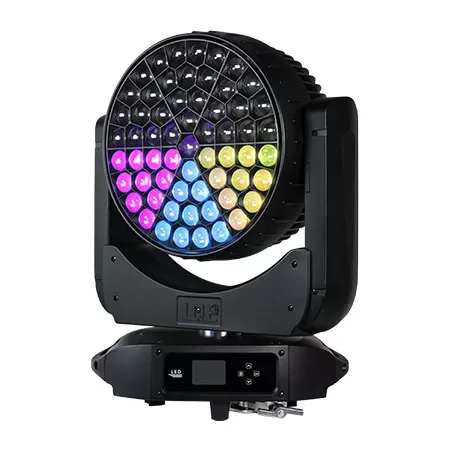
1000w 61x40w RGBW Stage Moving Head Wash Light LW1000
1000W 61x40W LED RGBW Mulichips Moving Head Wash Lights with Zoom (5°–50°), Covering Large Range and Long Distance. Designed to deliver a 5°–50° ultra-large zoom range to achieve a greater wash effect, illuminating stages and events with stunning lighting effects.

600w 19x40w RGBW Stage Moving Head Wash Light LW600 Zoom IP20
600W 19x40W LED RGBW Mulichips Moving Head Wash Lights with Zoom (5°–50°), Covering Large Range and Long Distance. IP20: Designed to deliver a 5°–50° ultra-large zoom range to achieve a greater wash effect, illuminating stages and events with stunning ring control lighting effects.

LED Moving Head Stage Wash Light LW200Z
The versatile moving head stage light provides a powerful lighting solution for theaters, concerts, and large outdoor performances. Suitable for theaters, TV stations, entertainment stages, and large outdoor performance scenes.

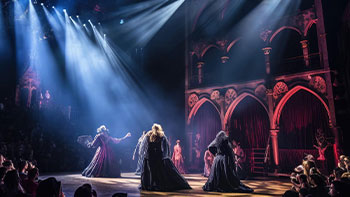
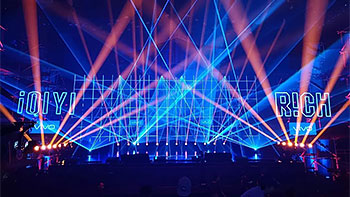

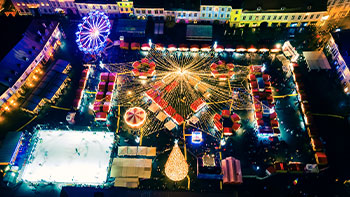








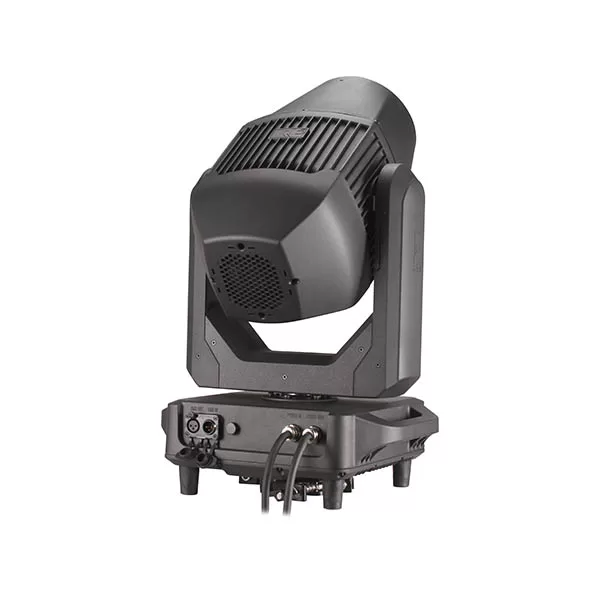
Linkedin
YouTube
Whatsapp: +8618924548390
TikTok